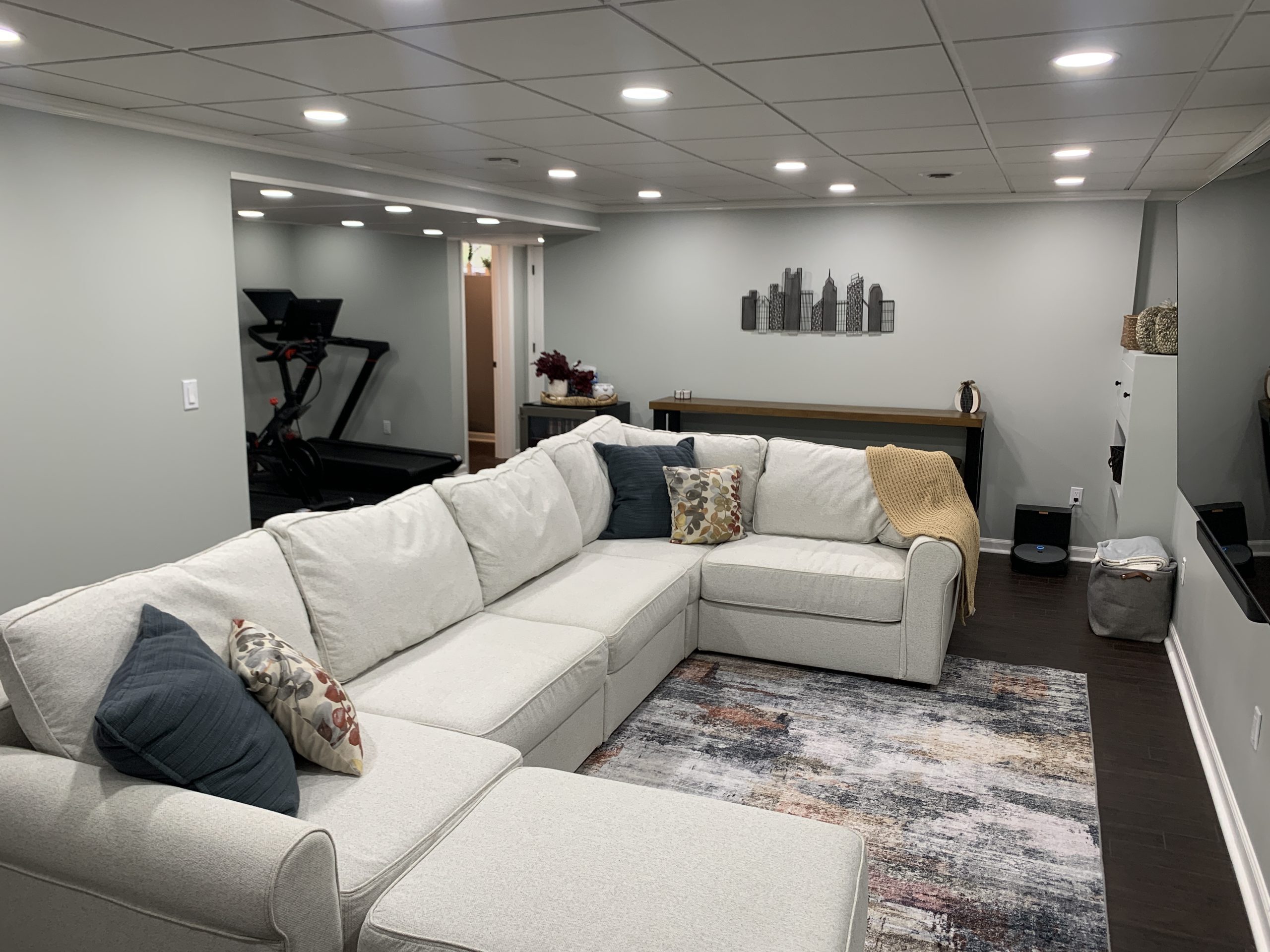Basement Finishing vs. Basement Remodeling: What’s Right for Your Pittsburgh Home?
October 27th, 2025
5 min read
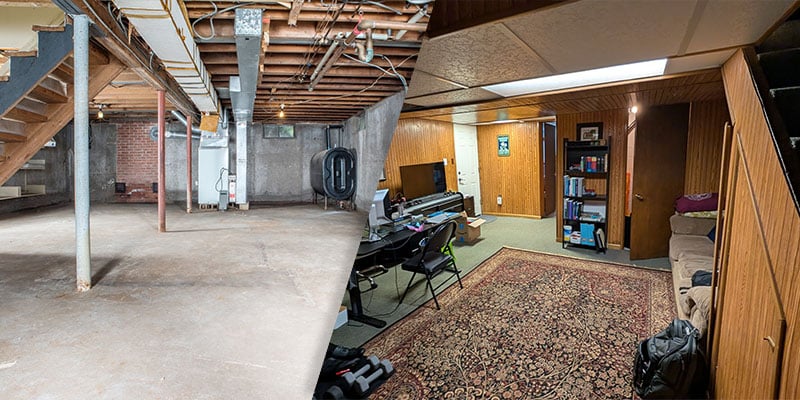
You’re finally ready to transform that wasted basement space, but you're stuck: Do you need a full finish… or just a refresh?
If your basement feels like wasted space, unfinished, underused, or stuck in the 1990s, you’re probably wondering how to bring it back to life. But here’s the catch: “Finishing” and “remodeling” aren’t the same, even though they get used interchangeably. And understanding the difference could save you serious time, money, and headaches.
At Energy Swing Windows, we’ve helped hundreds of Pittsburgh homeowners transform basements from raw concrete to beautiful, livable spaces using a system built specifically for below-ground environments.
In this guide, you’ll learn the difference between basement finishing and remodeling, what each involves, and how to choose the right approach for your goals.
Table of Contents
What Do Pittsburgh Homeowners Really Mean When They Say “Renovate the Basement”?
Whether people say “renovate,” “update,” “remodel,” or “finish,” they’re often trying to describe the same feeling:
“This space could be better, but I’m not sure what that actually means or how far I want to take it.”
And that’s a valid place to start.
But here’s where the difference matters: A remodel works with what’s already there. A finish transforms raw space into something entirely new.
Each has a different scope, cost, timeline, and contractor fit. A DIY refresh has a much different approach than building out a brand-new living space.
What Is Basement Finishing?
Basement finishing means taking an unfinished, below-grade space, bare concrete, exposed beams, and no insulation, and turning it into code-compliant, livable square footage with walls, insulation, dedicated electrical/lighting, a finished ceiling, durable flooring, and planned rooms or zones.
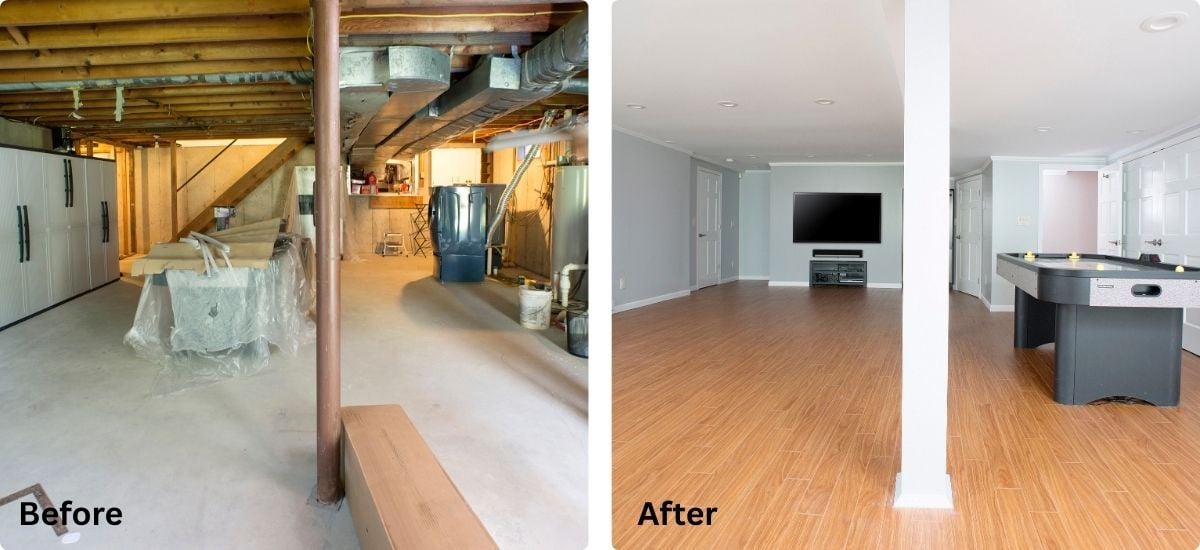
Basement Finishing typically includes:
-
Framing and insulation
-
Installing a wall system
-
Lighting, electrical, and outlets
-
Ceiling and flooring systems
-
Creating rooms, storage, or open-concept layouts
If your basement has never been finished before, or if you want to start over completely, this is the path. It’s a from-the-ground-up construction process and the kind of work Energy Swing specializes in.
What Is Basement Remodeling?
Basement remodeling updates what’s already finished; paint, flooring, lighting, or small layout adjustments, without rebuilding the entire below-grade system.
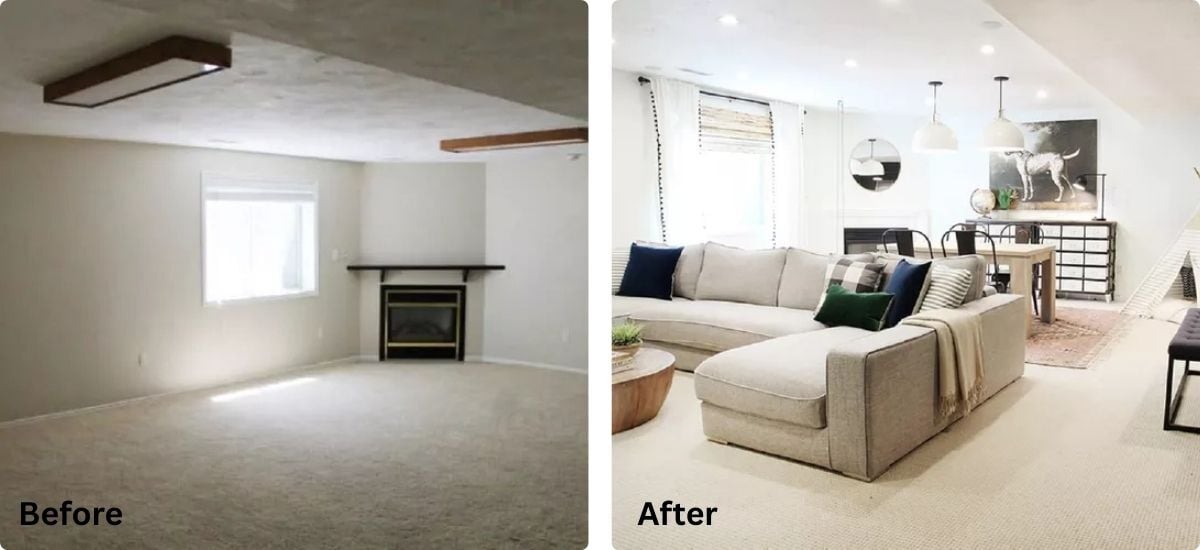
That might involve:
-
Swapping carpet for vinyl plank
-
Repainting walls
-
Moving a wall or closet
-
Updating lights or outlets
-
Changing the use of a space (e.g., turning a rec room into a home office)
Remodeling refreshes an existing finished basement; finishing creates livable space from an unfinished shell. Think light updates or cosmetic improvements, not major system overhauls.
Basement Finishing vs. Remodeling: What Are the Key Differences?
Here’s a quick side-by-side comparison to help clarify:
|
Feature |
Basement Finishing |
Basement Remodeling |
|
Starting Point |
Unfinished space |
Already finished space |
|
Goal |
Create livable space from scratch |
Refresh or reconfigure existing space |
|
Scope of Work |
Insulation, electrical, flooring, walls |
Paint, flooring, layout tweaks |
|
Cost |
Higher (full build-out) |
Lower (fewer materials, shorter timeline) |
|
Who to Hire |
Basement finishing specialist |
Remodeler, handyman, or trade specialist |
|
Is This an Energy Swing Project? |
✅ Yes |
❌ No (unless refinishing from scratch) |
Why It Matters to Know If You Need Finishing or Remodeling
Knowing upfront whether your project is a finish or remodel can save you:
-
Time: You won’t waste it calling the wrong type of contractor.
-
Money: Remodeling is cheaper, but it won’t give you the same transformation as finishing.
-
Frustration: The expectations for permits, materials, and disruption are totally different.
-
Headaches: Remodels that cut corners can cause bigger issues later (especially if code isn’t followed).
It’s about aligning the right solution with your space and your goals.
What Basement Services Does Energy Swing Specialize In?
At Energy Swing, we exclusively do basement finishing and full refinishing only. If your basement is unfinished or if you’re ready to tear everything out and start fresh, we’re a great fit.
Why don’t we do remodeling? Because our Total Basement Finishing System is designed to perform in below-ground environments from the floor to the ceiling. It’s:
-
Mold- and moisture-resistant
-
Energy-efficient
-
Covered by long-term warranties
If you’ve got old drywall, wood paneling, or carpet from the 1980s, we’re not going to build on top of it. It compromises the integrity of the system and we believe in doing it right or not at all.
Check out our guide that compares the pros and cons between traditional finishing materials and total basement finishing materials to see if our method makes sense for your project.
Can Energy Swing Help If My Basement Is Already Partially Finished?
Yes, if you’re willing to remove the existing materials and start over. That’s the key. We often get calls like:
"Can you just add a wall to our half-finished basement?”
But unless we’re starting from a blank slate (or you’re open to tearing out the old stuff), our system just doesn’t make sense. And honestly, the result wouldn’t look or perform the way it should.
Curious what qualifies as a finishable space? Check out our basement finishing process in the video below.
When Is Remodeling a Better Option Than Finishing?
Remodeling might be your better route if:
- Your layout already works
- The space is dry and fully finished
- You just want cosmetic updates (carpet, paint, or lighting)
- You’re on a tight budget
In those cases, hiring a handyman, electrician or painter directly is likely your best bet and way more cost-effective than a full finish.
How Do You Decide Between Finishing and Remodeling?
Ask yourself:
-
Is my basement currently unfinished or just outdated?
-
Do I need a total transformation or just a refresh?
-
Is the space meeting my needs—or do I need to rethink the layout entirely?
-
Am I prepared to invest in a project that may take several weeks and require permits?
| Type of Work | Best Fit for the Job |
|---|---|
|
Full basement buildout |
Basement finishing contractor (like Energy Swing) |
|
Painting, flooring, lighting only |
Remodeler or handyman |
|
Adding walls or reconfiguring layout |
Remodeler or general contractor |
|
Tear-out + full rebuild |
Basement refinishing specialist |
If you’re not sure, schedule a consultation with someone who can give you honest advice. (Psst—we do that.)

What Should You Know Before Hiring a Basement Contractor?
Whether you’re finishing or remodeling, make sure to ask:
-
Do you specialize in finishing or remodeling?
-
Are you licensed and insured?
-
Do you offer product and installation warranties?
-
Can I see past projects?
-
Do you use waterproof or mold-resistant materials?
-
What’s your process and how long will it take?
Red flags to avoid:
-
No physical place of business
-
No references or past work examples
-
Willing to start tomorrow with no backlog
-
Pushy or unclear about costs and timeline
Which Adds More Home Value: Basement Finishing or Remodeling?
According to National Association of the Remodeling Industry, basement conversions to a living space have an estimated 86% ROI when it's time to sell.
That being said, starting over fresh when you have an outdated living space and increase toue percent of ROI. Basement finishing can add more value than remodeling because:
-
It creates new usable square footage
-
Everything is built to code from the start
-
The space has a cohesive, polished feel
-
Buyers view it as “move-in ready”
Remodeled basements, especially ones that were just pieced together or painted over, can feel outdated or inconsistent. And that’s a turn-off during resale.
Pro tip: Appraisers typically value new, code-compliant, below-grade systems more than cosmetic updates alone.
Not Sure If You Need Basement Finishing or Remodeling?
At the end of the day, knowing the difference between basement finishing and remodeling is essential if you want to avoid wasted time, budget surprises, and hiring the wrong kind of contractor.
Many Pittsburgh homeowners feel stuck between wanting more livable space and not knowing what level of work is actually required. Now you know how to tell the difference and when each approach makes sense.
If your basement is unfinished or you're ready to start fresh, finishing with a system built for below-grade performance is likely your best long-term move. If all you need is cosmetic updates, you’ll save time and money hiring a remodeler instead.
At Energy Swing, we specialize in full basement finishing and we’re happy to help you figure out if that’s truly what you need. No pressure. Just straight answers from a team who’s done this hundreds of times.
Schedule a free in-home consultation today and take the first step toward making your basement the space it was meant to be.
FAQs About Basement Finishing in Pittsburgh
Q: Can you finish a basement that’s partially remodeled?
A: Yes—but we’ll remove existing materials to ensure the new below-grade system performs as designed.
Q: How long does basement finishing usually take?
A: Typical projects run several weeks, depending on size, design features (e.g., bath/bar), permits, and inspections.
Q: What’s the biggest cost driver?
A: Scope (full build-out), bathroom/plumbing, and custom features (offices, media walls, bars) impact investment the most.
Q: Do you handle permits and inspections?
A: Yes, for finishing and full refinishing projects we coordinate required permits and inspections in your municipality.
Zach Fontecchio is a Client Consultant at Energy Swing who specializes in Basement Finishing. Having work with homeowners across the Pittsburgh area, he understands how to find the right basement finishing solutions based on homeowner needs.
Topics:



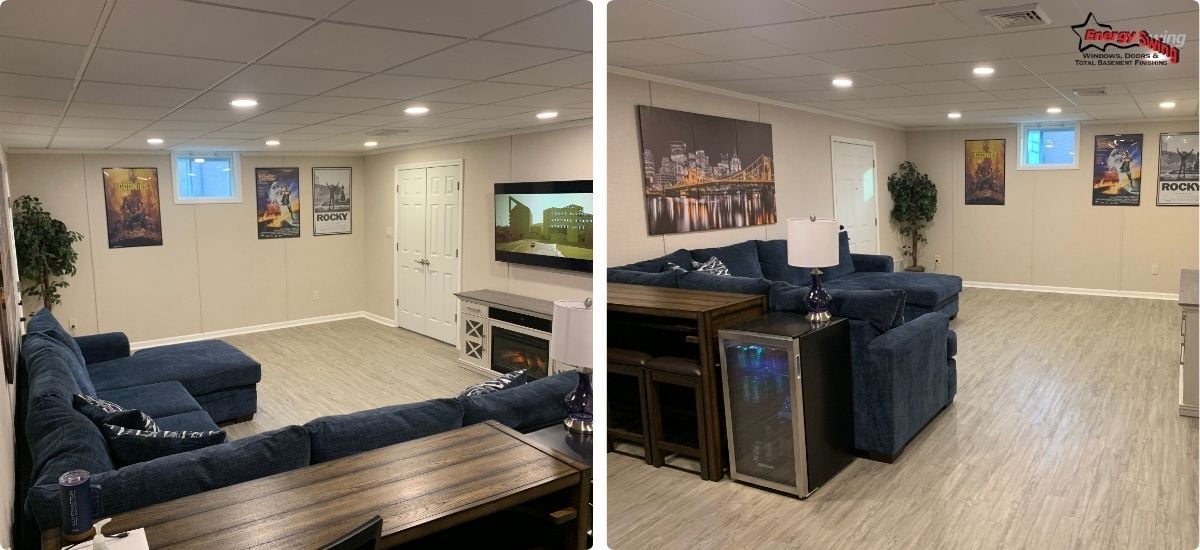
.jpg?width=1200&height=550&name=Copy%20of%20Copy%20of%20ESW%20Collage%20Template%20(3).jpg)

